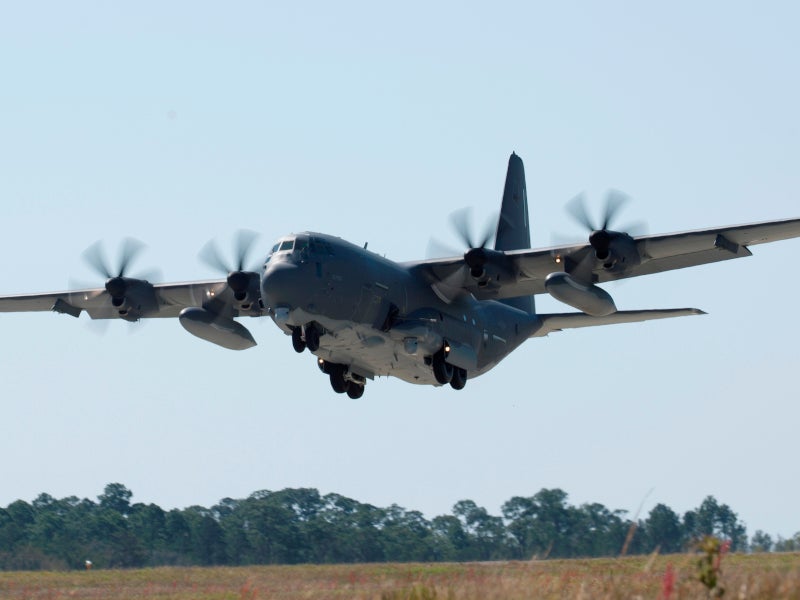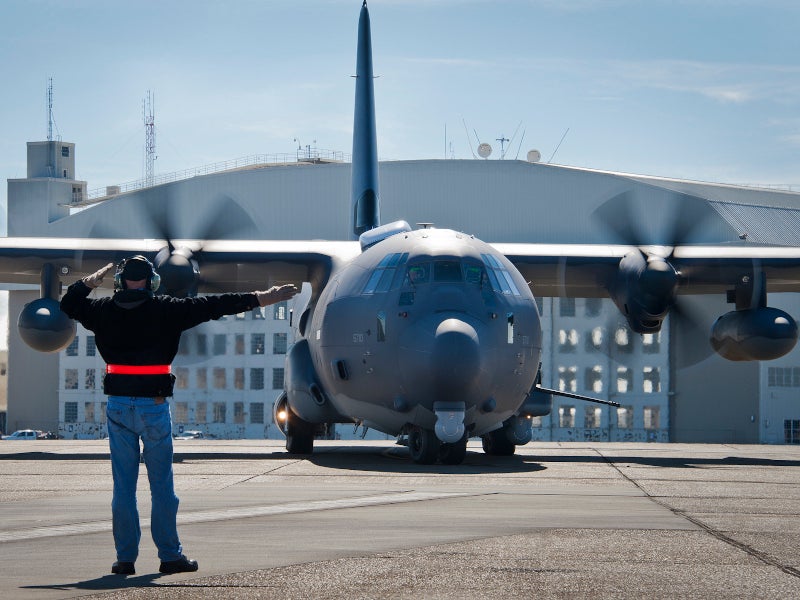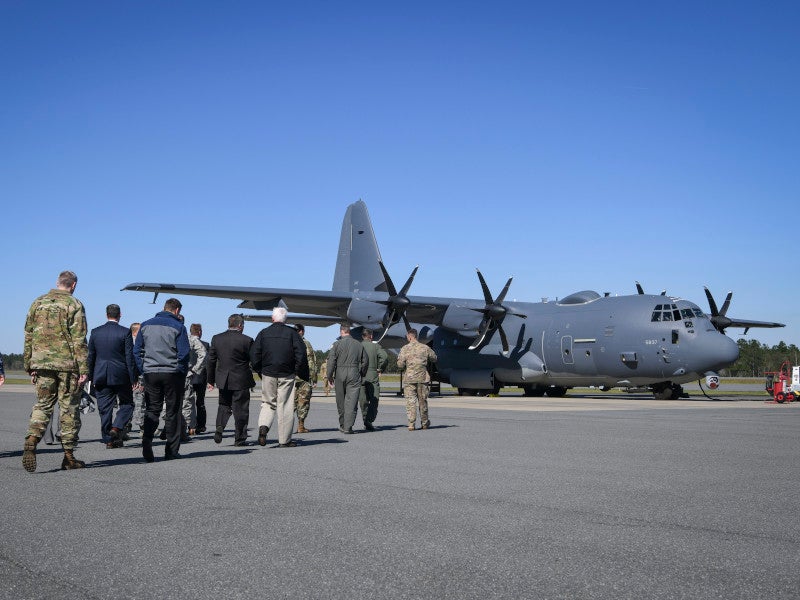AC-130J Ghostrider, a modified version of the MC-130J aircraft, is the replacement for the AC-130H/U aircraft of the US Air Force. The first test flight of the AC-130J Ghostrider was completed in January 2014.
Lockheed Martin will deliver 37 AC-130J Ghostrider aircraft to the Air Force Special Operations Command (AFSOC) by 2021. The total investment for the AC-130J Ghostrider programme is estimated to reach $2.4bn.
AC-130J Ghostrider development details
The first MC-130J arrived at Eglin Air Force Base (AFB) for conversion into the AC-130J configuration in January 2013. The aircraft was officially named Ghostrider in May 2012.
The preliminary design review (PDR) for the AC-130J programme was concluded in March 2013. The operational test readiness review (OTRR) and the critical design review (CDR) were conducted in April 2013 and August 2013 respectively.
The Air Force Special Operations Command received the first Ghostrider for operational testing in July 2015.
MC-130J Commando II Aircraft, United States of America
The MC-130J Commando II is a special operations tanker aircraft manufactured by Lockheed Martin for the US Air Force Special Operations Command.
Northrop Grumman Corporation was awarded a contract by the AFSOC to supply radio frequency countermeasure platforms for the AC-130J aircraft in January 2016.
BAE Systems was contracted to provide new electronic warfare systems for the AC-130J Ghostrider aircraft in July 2017.
The initial operational capacity for 16 aircraft of the AC-130J Ghostrider fleet was achieved in September 2017.
The first upgraded Block 30 AC-130J Ghostrider was delivered to the US Air Force (USAF) Special Operations Command (AFSOC) in March 2019 and flew its first-ever combat mission in Afghanistan in June 2019.
The arrival of the Ghostrider gunships marked the completion of the final deployment of the AC-130U Spooky IIs, which returned to the US.
AC-130J Ghostrider missions and capabilities
The hybrid AC-130J Ghostrider incorporates the flying proficiencies of the MC-130J and the air-to-ground combat capabilities of the AC-130. It will conduct continuous strike operations, including close air support (CAS) for troops in contact, convoy escort and point air defence. The deep air support missions are executed against pre-planned targets and targets of opportunity.
The aircraft is capable of air refuelling with the universal air refueling receptacle slipway installation (UARRSI) system but is not fitted with the external hose-and-drogue pods for refuelling other aircraft.
Features of the AC-130J Ghostrider
AC-130J Ghostrider has an overall length of 29.3m, a height of 11.9m and wingspan of 39.7m. It can operate at a maximum altitude of 28,000ft with a payload of 42,000lb. Its maximum take-off weight is 164,000lb.
“The aircraft is also designed to accommodate the Large Aircraft Infrared Countermeasures system.”
The fourth generation gunship aircraft can accommodate two pilots, two combat systems officers, and three enlisted gunners. The aircraft is also designed to accommodate the Large Aircraft Infrared Countermeasures (LAIRCM) system.
The AC-130J is fitted with an AN/ALR-56M radar warning receiver, AN/AAR-47 (V) 2 missile warning system, and AN/ALE-47 countermeasures dispensing system for reduced susceptibility. The safety and protection systems of the aircraft include a fuel protection system from ullage explosion, redundant flight critical components, and QinetiQ’s Last lightweight composite armour system to protect crew locations and oxygen supply areas from 7.62mm ball projectiles.
USSOCOM’s Precision Strike Package (PSP) armament for the AC-130J Ghostrider
The United States Special Operations Command (USSOCOM) developed and installed the modular Precision Strike Package (PSP) for the aircraft. The armament kits under the PSP include a 30mm GAU-23 automatic side firing chain gun, a 105mm cannon, and Standoff Precision Guided Munitions (SOPGM) comprising wing-mounted GBU-39 small diameter bombs and AGM-176 Griffin laser-guided missiles. The internally mounted missiles can be launched through the rear cargo door.
The intelligence, surveillance, and reconnaissance equipment under the PSP include two electro-optical/infrared sensors, an all-weather synthetic aperture radar pod, a pilot helmet-mounted cueing system, and multiple video, data and communication links. A dual-console Mission Operator Pallet within the cargo bay controls all the PSP subsystems. The aircraft is also equipped with advanced fire control equipment.
Engines and performance
The aircraft is fitted with four Rolls-Royce AE 2100D3 Turboprops with a thrust power of 3,458kW each. Each of the AE 2100D3 engines is 3.15m in length and 0.73m in diameter. The engines drive four six-bladed Dowty propellers.
AC-130J Ghostrider is equipped with 60/90KV amp generators providing increased direct current (DC) electrical output. The aircraft can reach a maximum distance of 3,000 miles without refuelling and can fly at a speed of 362k at 22,000ft altitude.






